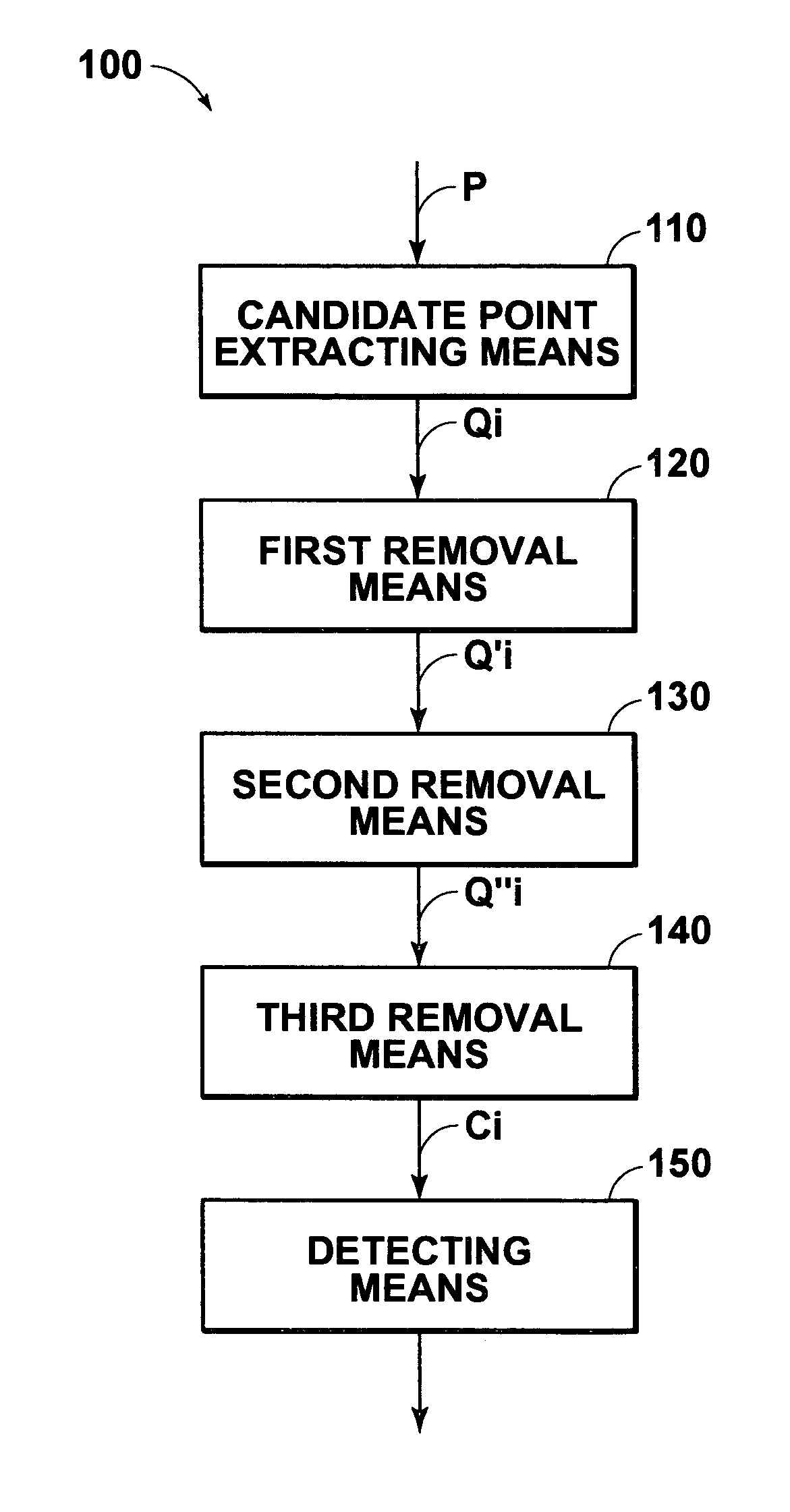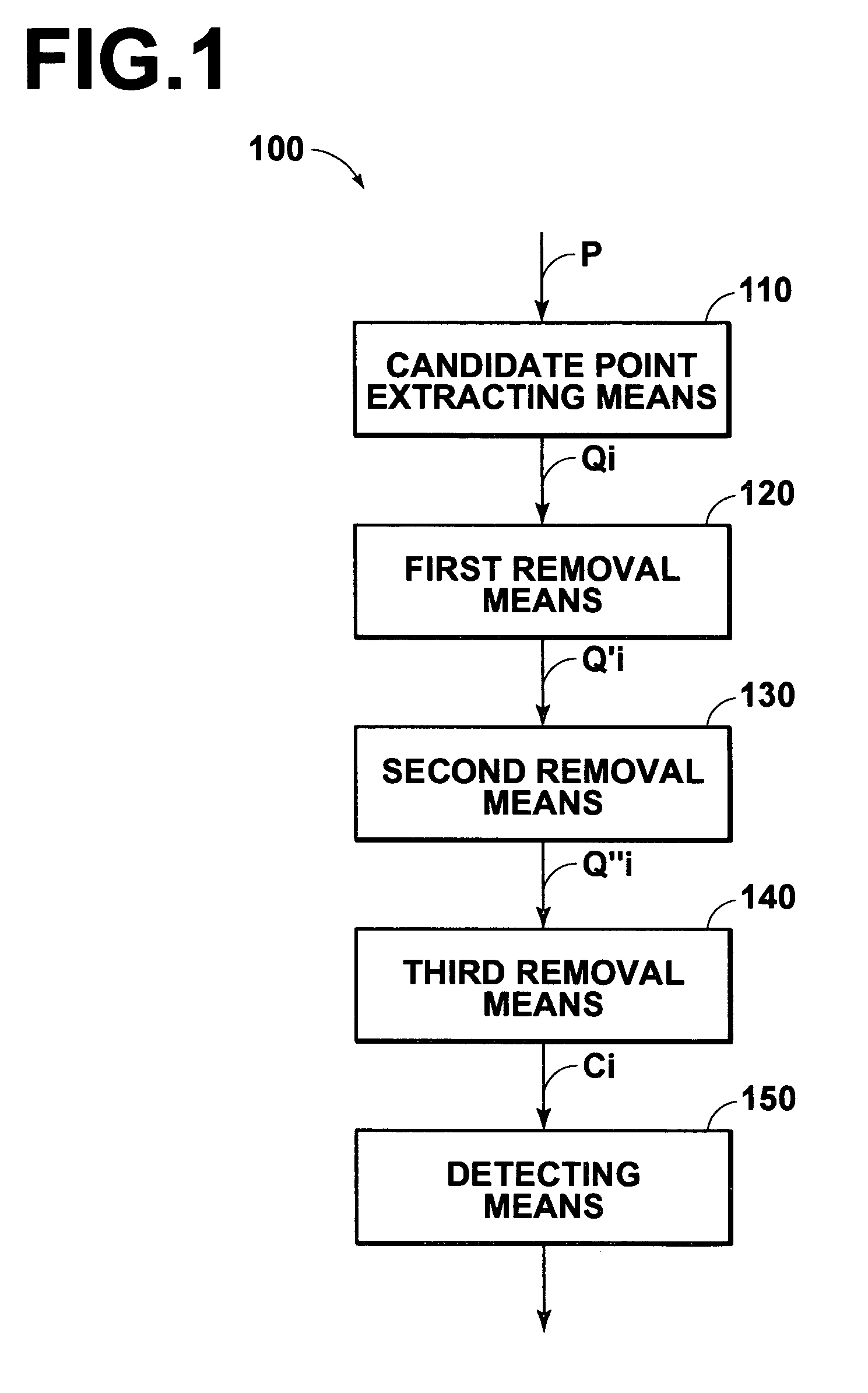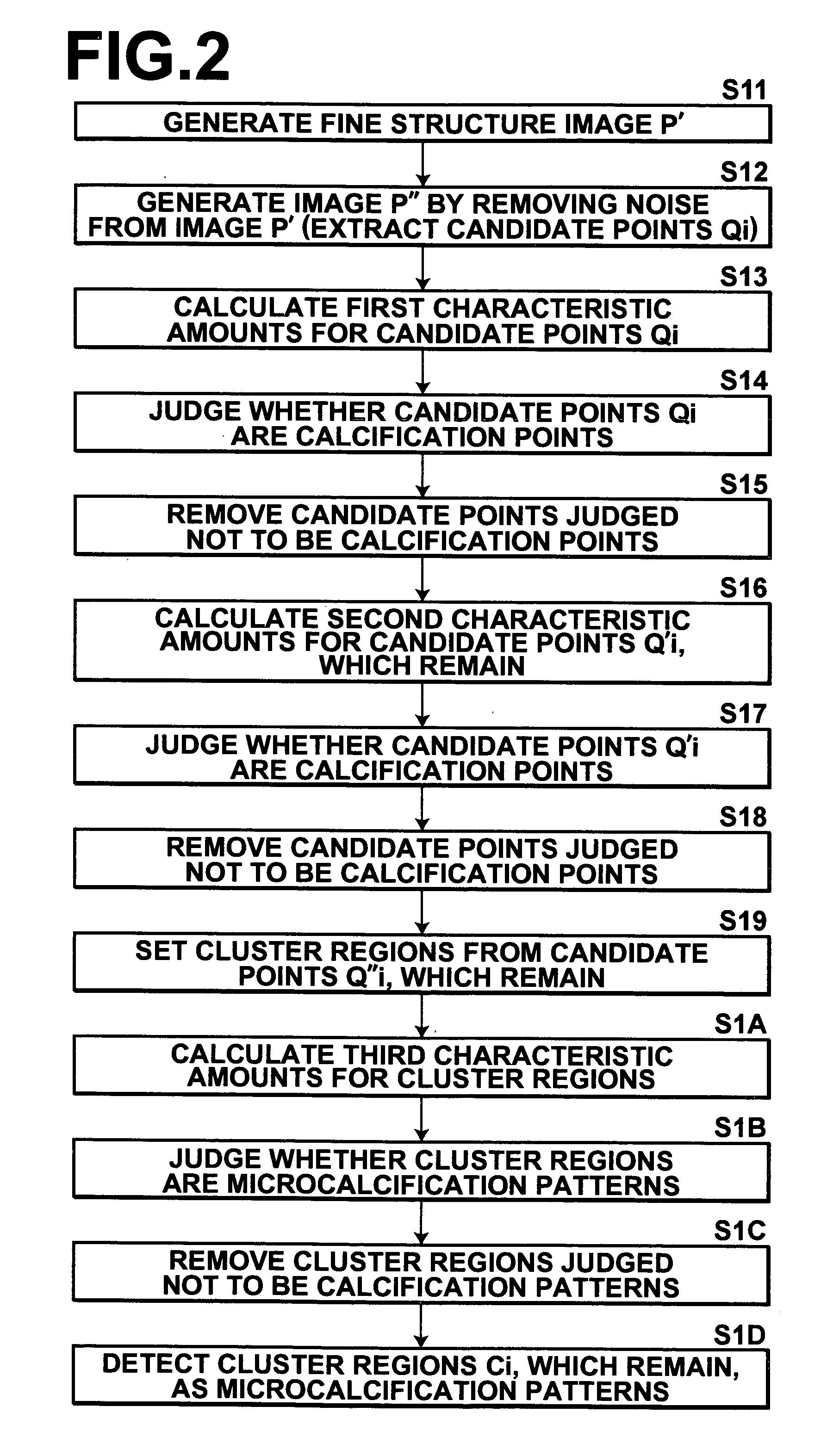Method, apparatus, and program for detecting abnormal patterns
a technology of abnormal patterns and programs, applied in the field of abnormal pattern detection methods, apparatuses and programs, can solve the problems of inability to accurately discriminate microcalcification patterns, erroneously detected, and noise components and tissue parts, so as to improve the accuracy of discrimination, high accuracy, and the effect of effectively removing noise components
- Summary
- Abstract
- Description
- Claims
- Application Information
AI Technical Summary
Benefits of technology
Problems solved by technology
Method used
Image
Examples
Embodiment Construction
[0070] Hereinafter, embodiments of the present invention will be described with reference to the attached drawings. FIG. 1 is a schematic diagram illustrating an apparatus 100 for detecting abnormal patterns, which is an embodiment of the first apparatus for detecting abnormal patterns of the present invention.
[0071] The apparatus 100 comprises: a candidate point extracting means 110; a first removal means 120; a second removal means 130; a third removal means 140; and a detecting means 150. The candidate point extracting means 110 extracts candidate points Qi for microcalcification patterns from within an image P. The first removal means 120 judges whether the extracted candidate points Qi are calcification points, based on first characteristic amounts that focus on calcification points of a microcalcification pattern, and removes those candidate points which are judged not to be calcification points. The second removal means 130 judges whether the candidate points Q′i, which rema...
PUM
 Login to View More
Login to View More Abstract
Description
Claims
Application Information
 Login to View More
Login to View More - R&D
- Intellectual Property
- Life Sciences
- Materials
- Tech Scout
- Unparalleled Data Quality
- Higher Quality Content
- 60% Fewer Hallucinations
Browse by: Latest US Patents, China's latest patents, Technical Efficacy Thesaurus, Application Domain, Technology Topic, Popular Technical Reports.
© 2025 PatSnap. All rights reserved.Legal|Privacy policy|Modern Slavery Act Transparency Statement|Sitemap|About US| Contact US: help@patsnap.com



